BEHIND THE SCENES
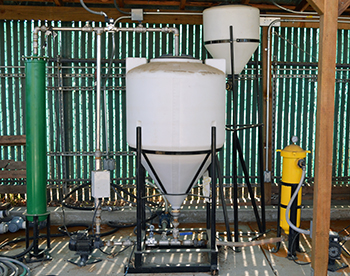
RMS Collaboration Leads to New Educational Opportunities
ABA’s leadership for campus sustainability is not new. But a program that integrates academics with operations in a collaborative activity to provide educational opportunities for students is a new and remarkable example of that leadership.
The Sustainable Technology Outdoor Research Center, or STORC for short, was fairly inconspicuous to most until recently. These days, it is drawing broad interest for both its collective spirit and its innovative potential.
Located just off of State University Drive near parking lot 4 in an outdoor fenced area, the Risk Management Services (RMS) plot that once housed the Office of Water Programs' Storm Water Research project has now been repurposed as a place for academic research projects that promote sustainability.
RMS oversees the facilities and helps provide guidance to ensure project safety and compliance with state regulations and restrictions. Associate Vice President Mike Christensen is enthusiastic about facilitating the STORC to bridge the gap between operations and academics. "We exist to serve student academics," said Christensen.
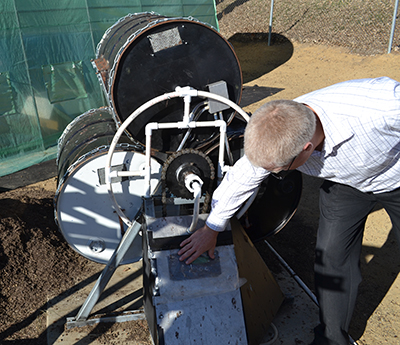 STORC came to be when Christensen teamed up with Facilities Management and faculty in Engineering and Environmental Science. Facilities Management had a vision for the outdoor space and worked to clear the overgrown vegetation and fence the area. The operational/academic collaboration took off following discussions between Christensen and Mechanical Engineering Chair Susan Holl and Professor Dudley Burton, Environmental Studies.
STORC came to be when Christensen teamed up with Facilities Management and faculty in Engineering and Environmental Science. Facilities Management had a vision for the outdoor space and worked to clear the overgrown vegetation and fence the area. The operational/academic collaboration took off following discussions between Christensen and Mechanical Engineering Chair Susan Holl and Professor Dudley Burton, Environmental Studies.
The projects are myriad. Mechanical Engineering students are finishing a biodiesel project. Other projects include hydroponic research, multi-trophic farming, and a bio-toilet waste management system. The departments of Biology, Environmental Health & Science and Mechanical Engineering are supporting ongoing projects each at different stages of completion.
The Biodiesel Production System (BPS) is just one example of a project yielding real results – and specifically for the campus. Beginning two years ago, the idea was proposed to use kitchen oil waste produced by Sac State's campus eateries and convert it into biodiesel. Nearing completion, the BPS will be able to produce enough biodiesel to fuel the University's grounds equipment. This will help reduce costs for fuel as well as reduce emissions from petroleum-based diesel.
According to Holl, opportunities like these provide experiential learning to students with real-world applications. "This is one of the ways that we like to create an interdisciplinary opportunity, so students see what they’re working for, that their job is to make the world better." Christensen shares her perspective, as previously there was "no space to stage projects," and now students have the area needed to "achieve their academic goals while maintaining compliance."
As for the bio-toilet, it is still in development, but its applications are numerous. Originally proposed as a way to process human waste into pathogen-free fertilizer, the project has taken on a new challenge - processing food 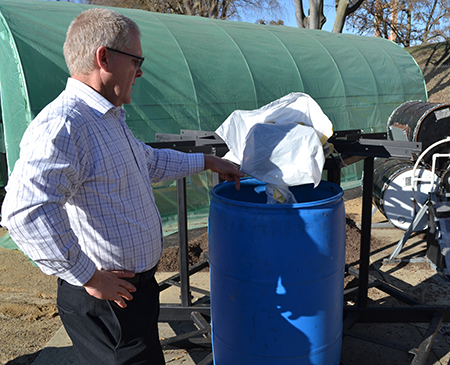 waste: "We’re using it just to compost and collect data on it. The compost can be used for worm food. The worms can then be fed to the fish as kind of a whole cycle that’s addressed in this process, and the students can immediately begin to see how everything interrelates and has a potential to interrelate."
waste: "We’re using it just to compost and collect data on it. The compost can be used for worm food. The worms can then be fed to the fish as kind of a whole cycle that’s addressed in this process, and the students can immediately begin to see how everything interrelates and has a potential to interrelate."
The amount of attention the STORC is receiving grows by the day. The STORC has been covered by various local media outlets, such as University Public Affairs, The Sacramento Bee and The State Hornet newspaper. Christensen continues to receive emails with questions and expressions of interests. "Everyone is inherently curious. This is very interesting, and people are drawn into the possibilities."
Helping students learn is just one of Christensen's passions. As an environmental scientist himself, he understands the value that projects like these provide students. He knew his role would allow him to effectively link regulatory functions to academics or, as he describes it, serve the "compliant side of education."
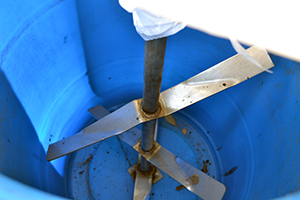 One challenge he foresees for STORC is its own sustainability in the future. He understands that in order for the research center to be successful it will need to be continually funded. "How do we make enough of an impact to attract financial support and keep it an ongoing concept?" asked Christensen. "What is this going to look like in ten years? Will it continue to have value in ten years?"
One challenge he foresees for STORC is its own sustainability in the future. He understands that in order for the research center to be successful it will need to be continually funded. "How do we make enough of an impact to attract financial support and keep it an ongoing concept?" asked Christensen. "What is this going to look like in ten years? Will it continue to have value in ten years?"
These are issues to be considered, which is why Christensen is so passionate about providing leadership for and facilitation of these projects. "STORC is the essence of redefining the possible," because it is "not just about staging a project, but how that project integrates with other projects and finds new applications."
If you are interested to learn more about the STORC, contact Mike Christensen at 278-5252, or view other recent articles about the STORC by Sac State's Public Affairs Office, The Sacramento Bee, or The State Hornet newspaper.
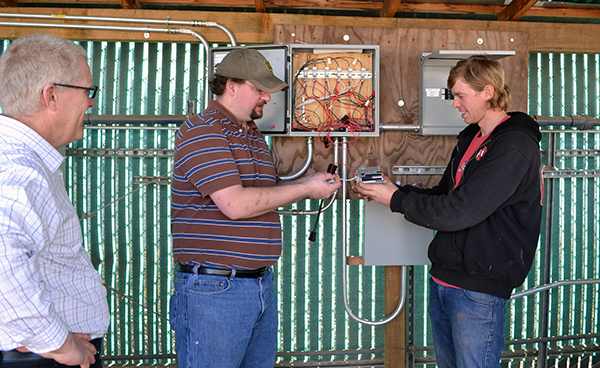 |



